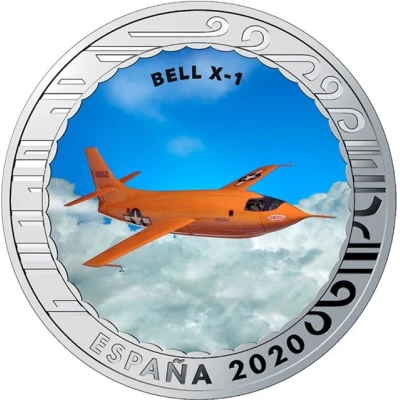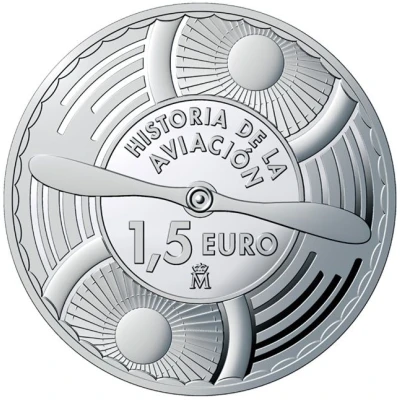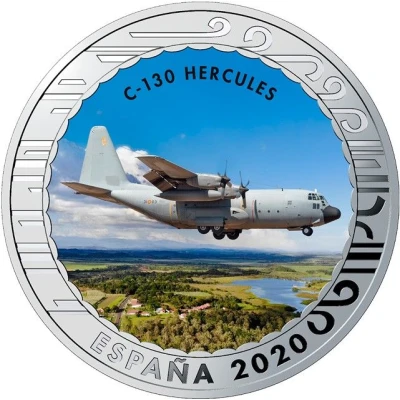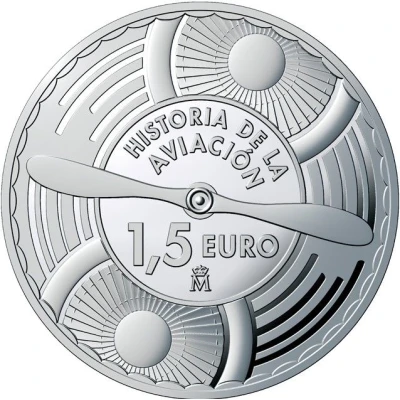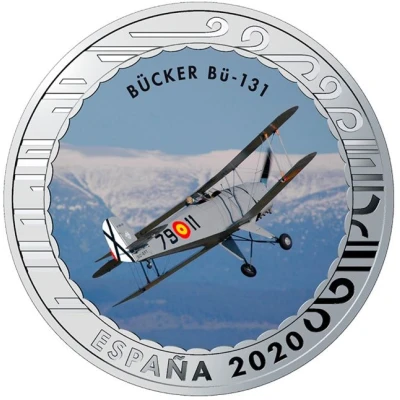
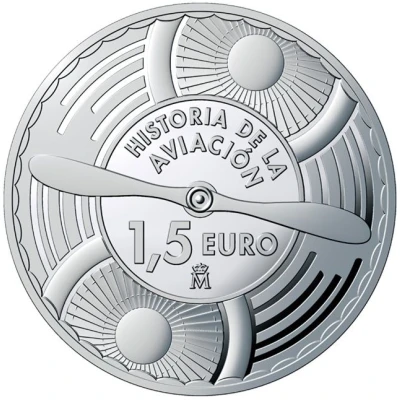

© Real Casa de la Moneda
1.5 Euro Bücker Bü
2020 year| Copper-nickel | 15 g | 33 mm |
| Issuer | Spain |
|---|---|
| King | Felipe VI (2014-date) |
| Type | Non-circulating coin |
| Year | 2020 |
| Value | 1.5 Euro 1.50 EUR = USD 1.65 |
| Currency | Euro (2002-date) |
| Composition | Copper-nickel |
| Weight | 15 g |
| Diameter | 33 mm |
| Shape | Round |
| Technique | Milled, Coloured |
| Orientation | Medal alignment ↑↑ |
| Updated | 2024-10-07 |
| Numista | N#276362 |
|---|---|
| Rarity index | 91% |
Reverse
Two-bladed propeller in central circle, in outer ring two turbines separated from each other by lines.
Script: Latin
Lettering:
HISTORIA DE LA AVIACIÓN
1,5 EURO
M
Translation: History of aviation
Edge
Plain
Comment
An aircraft created in 1933 by the German Carl Clemens Bücker, a naval officer and seaplane pilot during World War I, in his enterprise Bücker Flugzeugheu GMBH. The development of the first prototype of the Bü-131 “Jungmann” (“young man”) started in Berlin in 1934, coinciding with Germany’s need to have a plane on which to train pilots for the new Luftwaffe that emerged after Hitler’s rise to power in 1933.In only 4 months the first prototype was built, a two-seater biplane with wings in a slight arrow configuration, seats in tandem and a fuselage in steel tube covered in fabric except for the engine area, the fuel tank and the cockpit sides, which were faired in aluminium sheeting. It was a very light, agile aircraft, very easy to manoeuvre, with excellent acrobatic qualities, especially its twin, the single-seater Bücker Bü-133 “Jungmeister”. For this reason it was acquired by the majority of both civil and military flight schools. It was the greatest export success of the German aeronautics industry, which built between 3,000 and 4,000 units in Germany alone. It flew in 23 countries, among them Spain, which was licenced to build it in the CASA factory of Puntales (Cádiz), where 450 units were built over 23 years (1940-1963).
All the pilot officers of the Air Force between 1945 and 1976 were trained in this magnificent aircraft at the General Air Academy. In 1976 it was transferred to Armilla (Granada), after having trained more than 2,000 pilots and having amassed 175,000 flight hours. It was permanently withdrawn from the Air Force in 1986 after almost half a century of service. However, this aeroplane continues to fly more than 80 years after the first Bücker “Jung- mann” was built, with barely any mechanical or structural modifications having made on it.
Interesting fact
The 1.5 Euro (Bücker Bü-131) 2020 coin from Spain made of Copper-nickel weighing 15g is a non-circulating coin, meaning it is not intended for general circulation and is instead produced in limited quantities for collectors.
Price
| Date | Mintage | VG | F | VF | XF | AU | UNC |
|---|---|---|---|---|---|---|---|
| 2020 M | 7500 | - | - | - | - | - | - |
Values in the table are based on evaluations by sales realized on Internet platforms. They serve as an indication only for 1.5 Euro (Bücker Bü-131) 2020 coin.
